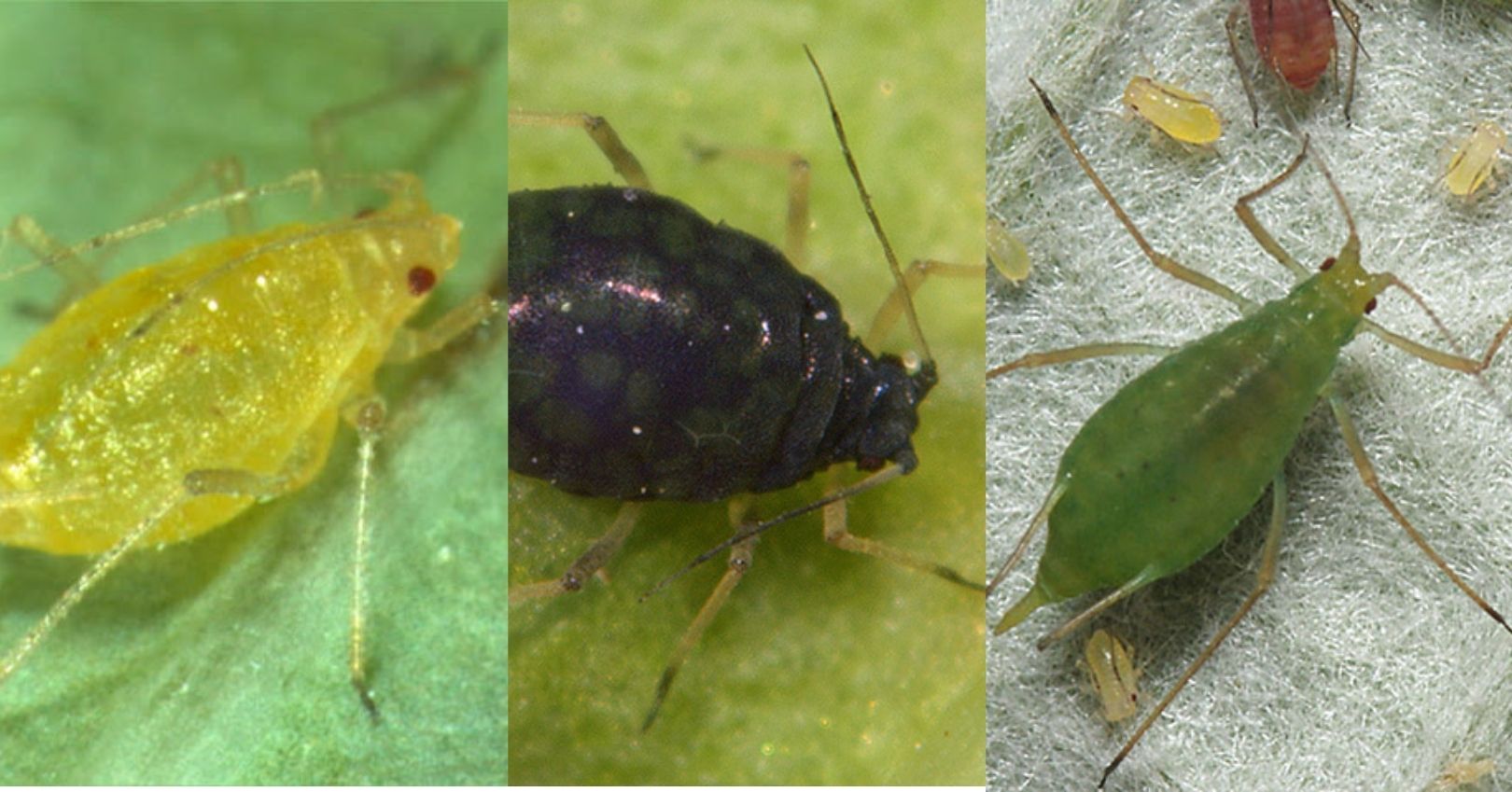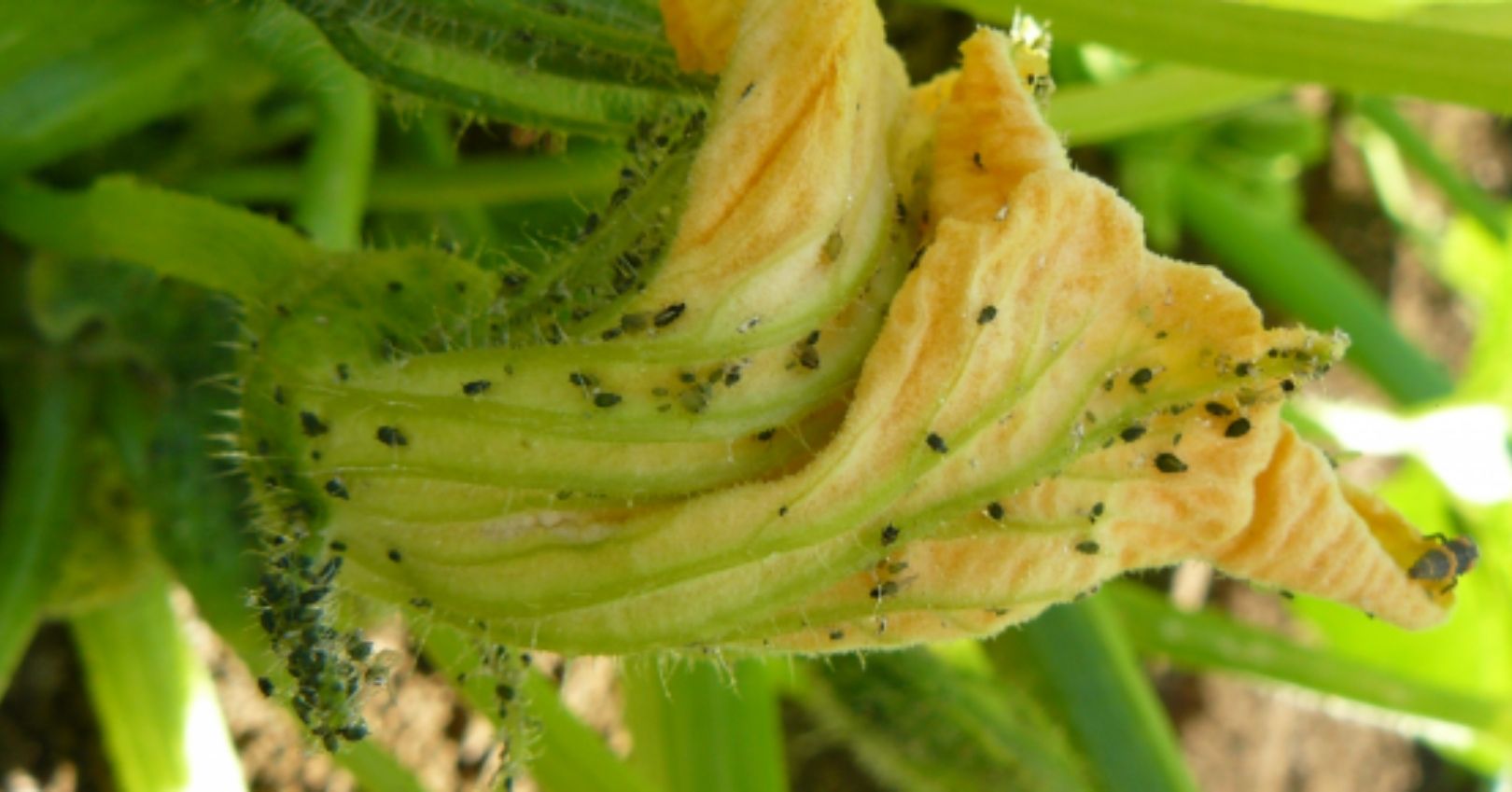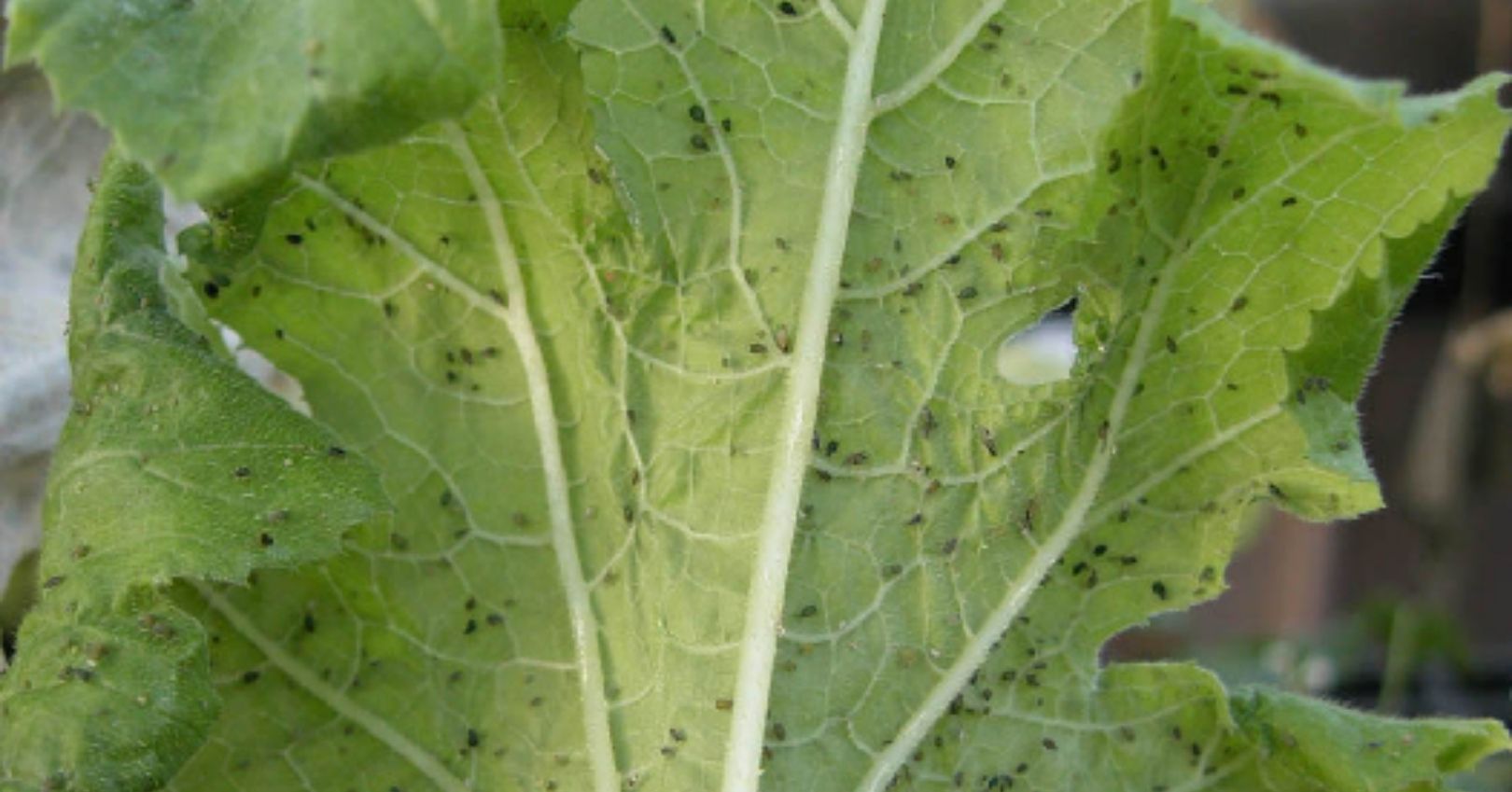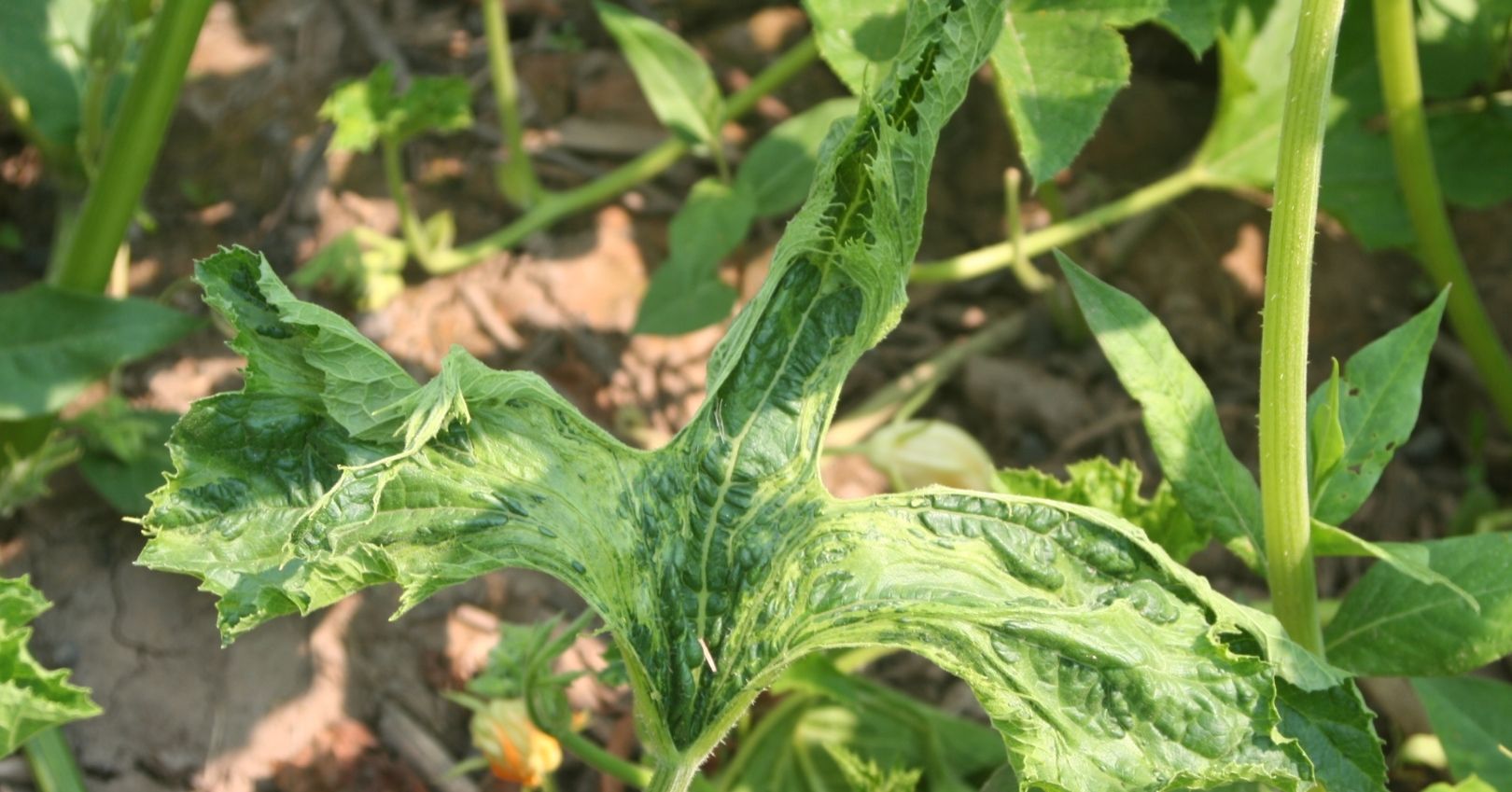Aphids
Green Peach Aphid




Description
Adult: Soft, pear-shaped body with red eyes and tailpipe-like appendages called cornicles on the rear of the body. Wingless adults are yellowish or greenish. The winged adult has a yellow-green abdomen, with a large dark patch on its back. It has a black head and thorax and is the same size as the wingless form. The oviparous (egg-laying) form is pinkish.
Egg: Initially yellow or green and become shiny-black as they mature. Eggs measure about 0.02 inches (0.50 mm) long and 0.01 inches (0.25 mm) wide. Eggs are usually deposited near buds of Prunus spp. trees.
Nymph: Similar in shape and color to the wingless adult, but are smaller. Nymphs that develop into winged adults may be pinkish.
Melon Aphid
Description
Adult: Soft-bodied, pear-shaped with dark cornicles. Melon aphid adults are smaller and have shorter appendages than the green peach aphid. Winged adults are about 0.05 inches (1.25 mm) long with yellow to dark green bodies. They have a black head and thorax. Wingless adults are about 0.04 to 0.06 inches (1 to 1.5 mm) long with yellow to dark green bodies.
Egg: Yellow when first deposited, turning shiny black when mature.
Nymph: Resemble adults but are smaller in size, about 0.02 to 0.04 inches (0.5 to 1.0 mm) long
Potato Aphid
Description
Adult: Larger than the green peach and melon aphids, 0.08-0.16 inch (2-4 mm) long with pink or green bodies.
Egg: Similar to green peach and melon aphid eggs.
Nymph: Similar color and shape as adults, but smaller.
Aphid Life History
The green peach aphid overwinters as eggs at the base of buds in peach/nectarine trees, the melon aphid overwinters on a variety of woody plants and weeds, and the potato aphid overwinters principally on wild and cultivated rose plants and is generally, more common in vegetable crops in the spring and fall. Green peach aphid and melon aphid populations peak on vegetable crops during July and early August.
Aphid Damage
Aphids do not generally attack cucurbits until the vines form runners. Melon and green peach aphids attack cucumber, melon, pumpkin, and squash. Potato aphids only attack cucumber, pumpkin, and squash.
One of the major concerns of aphids is their ability to transmit plant viruses. Over one hundred different viruses can be transmitted by adults as well as nymphs. Both persistent viruses, which move through the feeding secretions of the aphid, and non-persistent viruses, which are only temporary contaminants of aphid mouthparts, are effectively transmitted by aphids. Green peach aphids cause damage by transmitting plant viruses, including Cucumber mosaic virus and Watermelon mosaic virus. The melon aphid is one of the chief agents in transmitting Cucumber mosaic virus and the potato aphid may act as a vector for this virus.
Aphid Management
Cultural
- Avoid excess fertilization. Aphid densities tend to be higher on plants that have an excess of nitrogen fertility.
- Use mulches or row covers. Metallized/reflective mulches and row covers can help reduce aphid populations on vegetables by interfering with the ability of winged aphids to find plants.
- Don’t plant vegetable crops near overwintering hosts. Such as peach or nectarine trees.
- Remove/destroy plant debris. Disking fields immediately after harvest will destroy alternate host plants and reduce available aphid and virus sources.
- Maintain healthy, vigorous plants. They are more tolerant to attack by aphids.
- Plant susceptible crops upwind. Planting upwind from infested plants decreases aphid migration into the crop since aphids are blown downwind.
Chemical
Many aphids have developed resistance to a number of different insecticides, including some synthetic pyrethroids, carbamates, and organophosphates. Additionally, when selecting insecticides, choose those that are less damaging to natural enemies of aphids and other insects in the crop.
Biological
Natural enemies include lady beetles, lacewings, syrphid flies, and parasitic wasps. These play a major role in the natural suppression of aphids.

